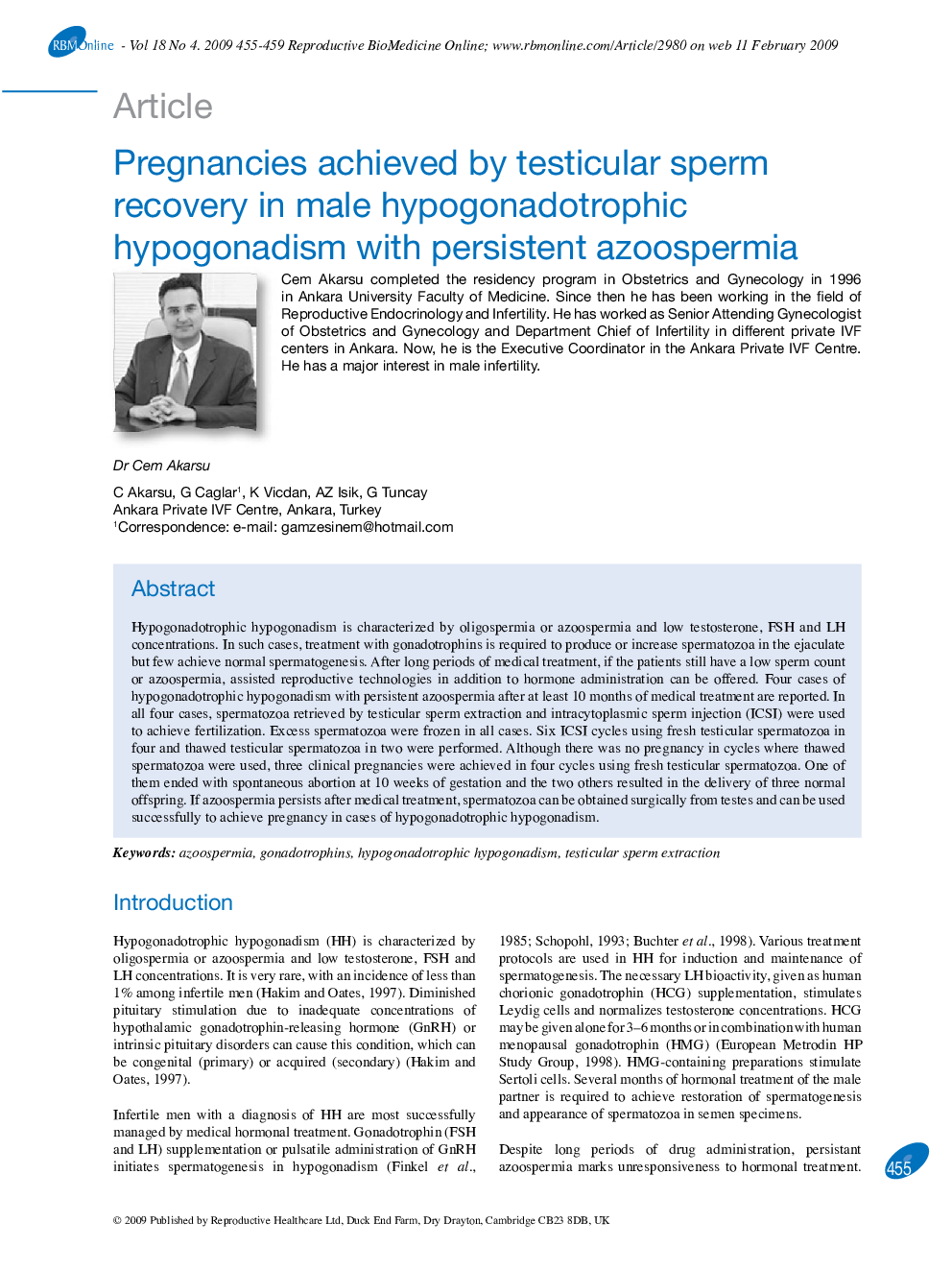| Article ID | Journal | Published Year | Pages | File Type |
|---|---|---|---|---|
| 3972418 | Reproductive BioMedicine Online | 2009 | 5 Pages |
Hypogonadotrophic hypogonadism is characterized by oligospermia or azoospermia and low testosterone, FSH and LH concentrations. In such cases, treatment with gonadotrophins is required to produce or increase spermatozoa in the ejaculate but few achieve normal spermatogenesis. After long periods of medical treatment, if the patients still have a low sperm count or azoospermia, assisted reproductive technologies in addition to hormone administration can be offered. Four cases of hypogonadotrophic hypogonadism with persistent azoospermia after at least 10 months of medical treatment are reported. In all four cases, spermatozoa retrieved by testicular sperm extraction and intracytoplasmic sperm injection (ICSI) were used to achieve fertilization. Excess spermatozoa were frozen in all cases. Six ICSI cycles using fresh testicular spermatozoa in four and thawed testicular spermatozoa in two were performed. Although there was no pregnancy in cycles where thawed spermatozoa were used, three clinical pregnancies were achieved in four cycles using fresh testicular spermatozoa. One of them ended with spontaneous abortion at 10 weeks of gestation and the two others resulted in the delivery of three normal offspring. If azoospermia persists after medical treatment, spermatozoa can be obtained surgically from testes and can be used successfully to achieve pregnancy in cases of hypogonadotrophic hypogonadism.
